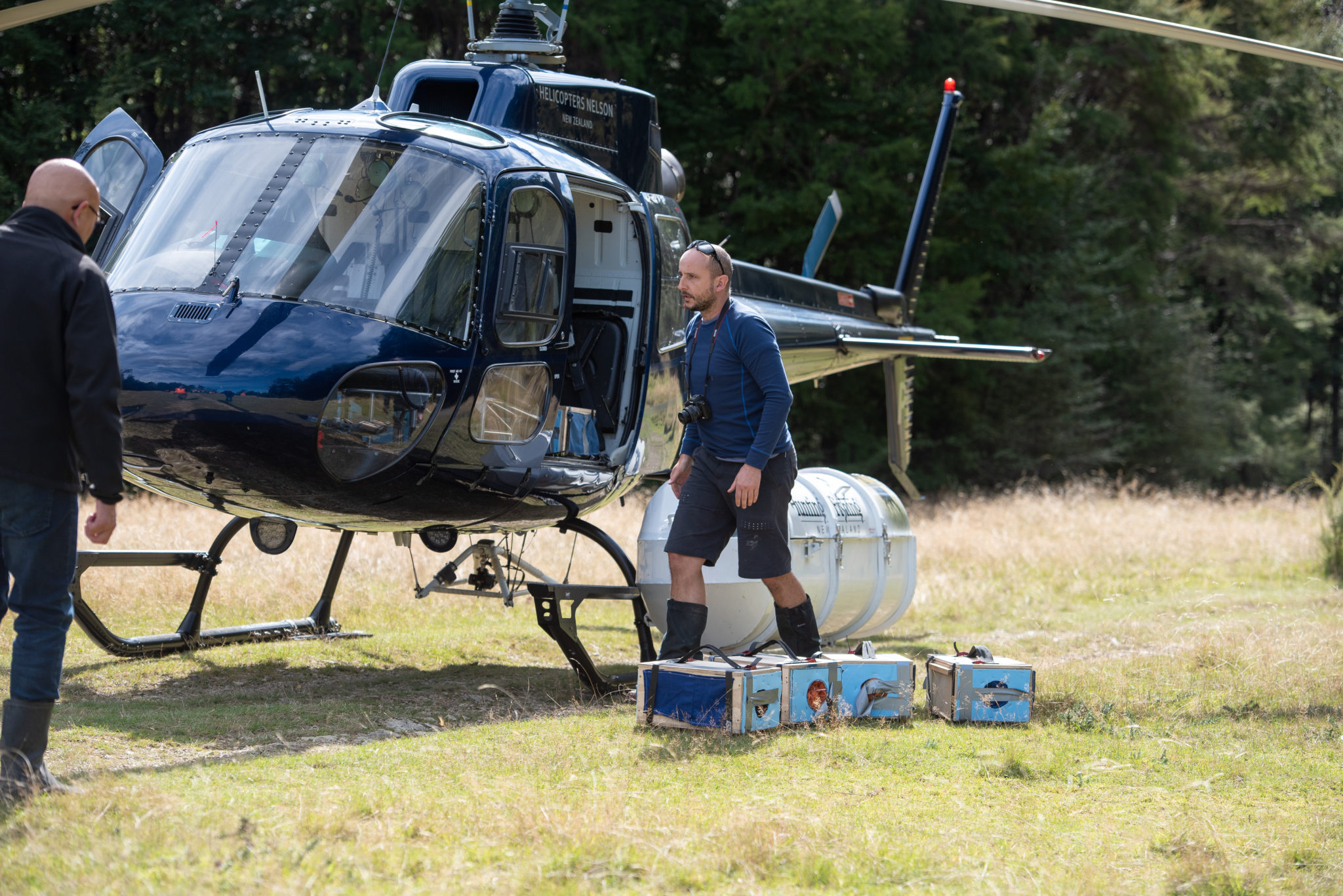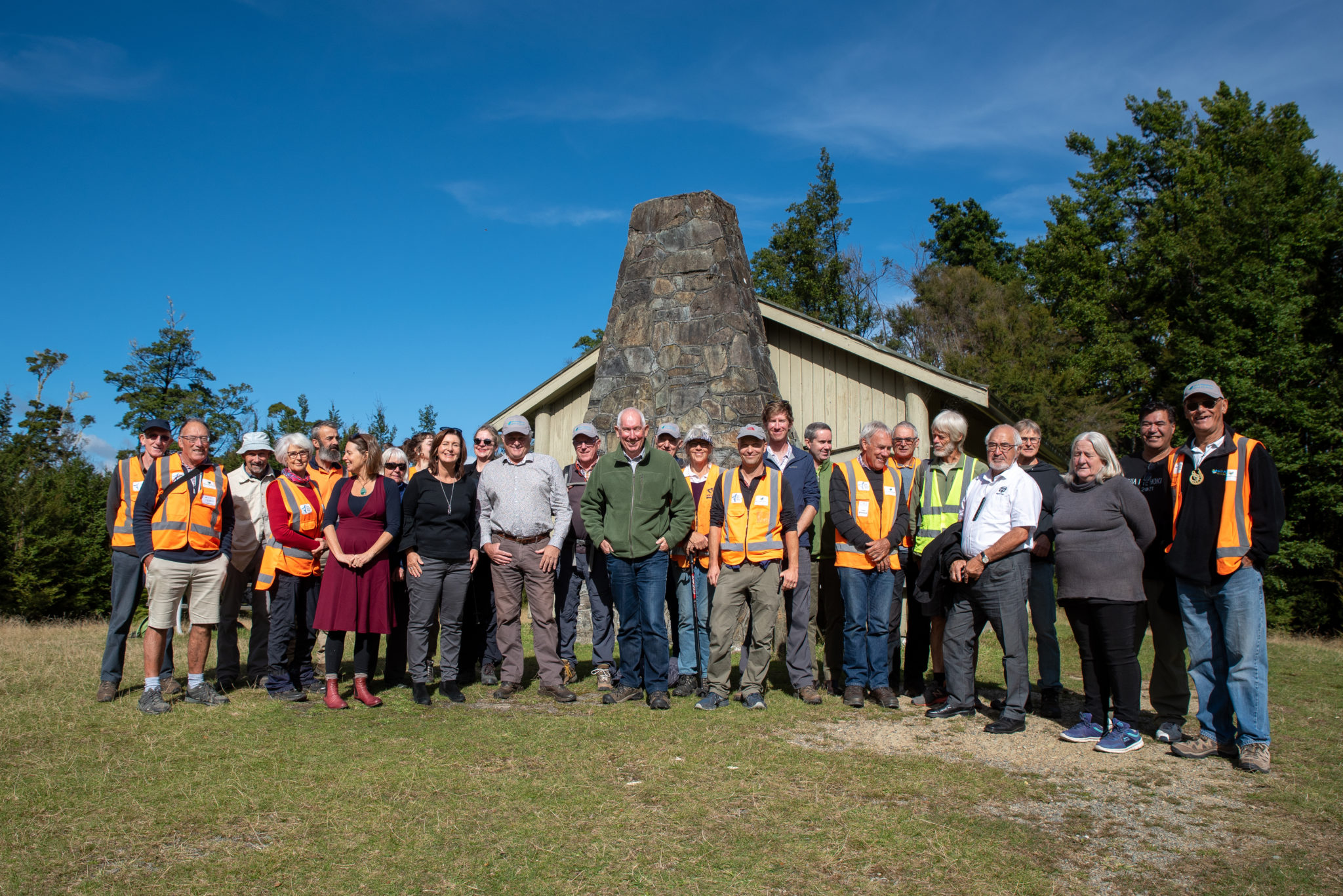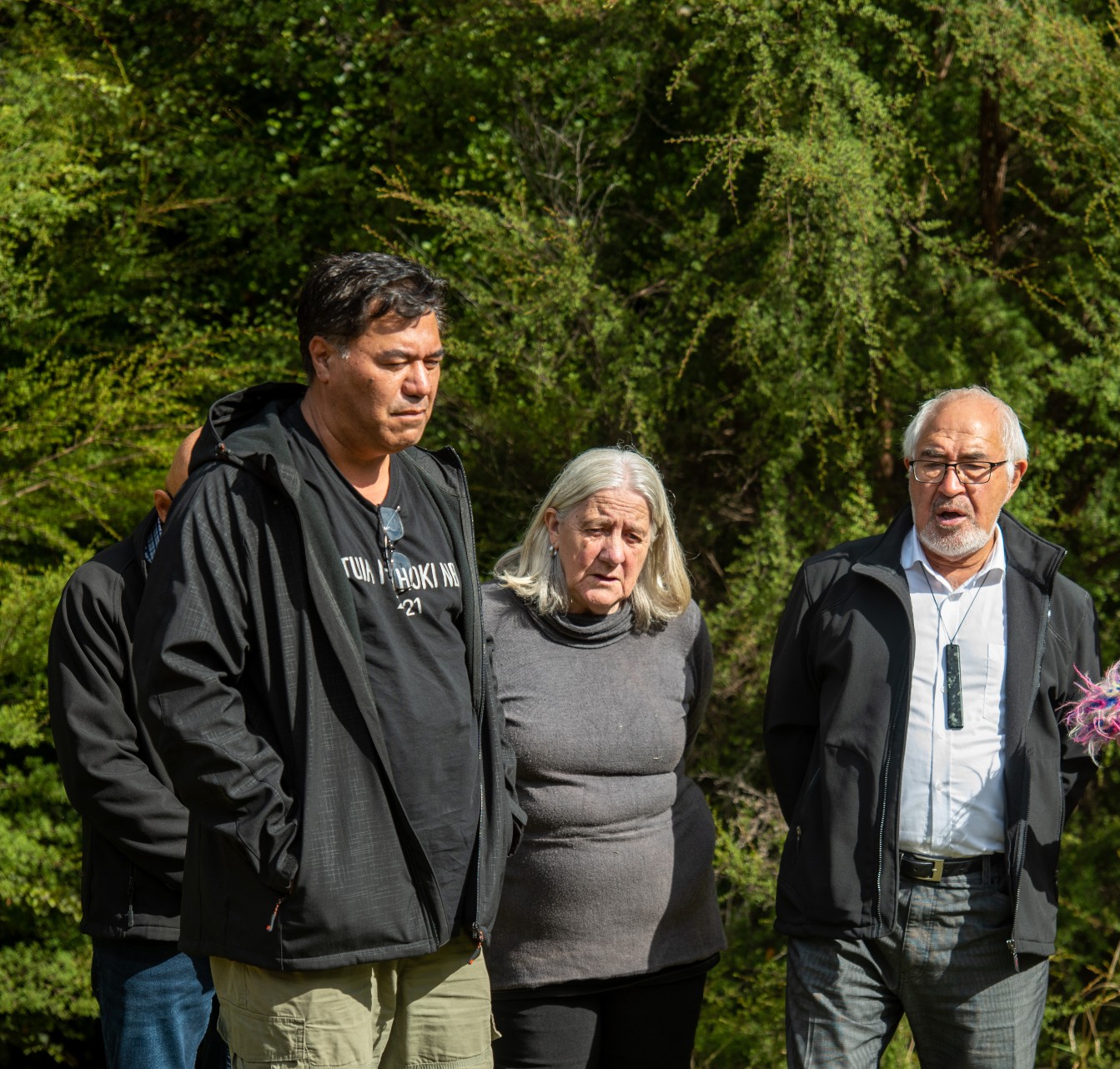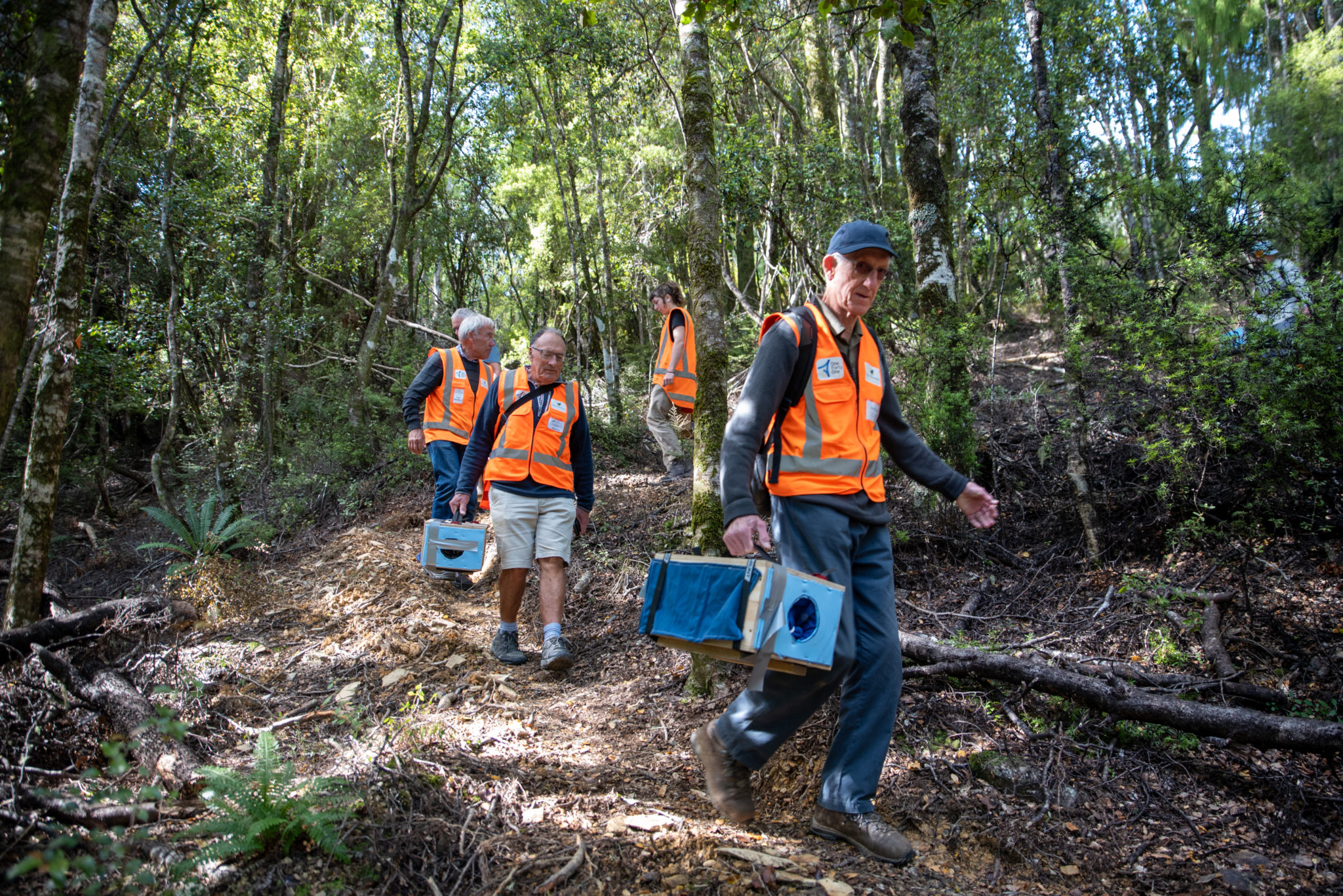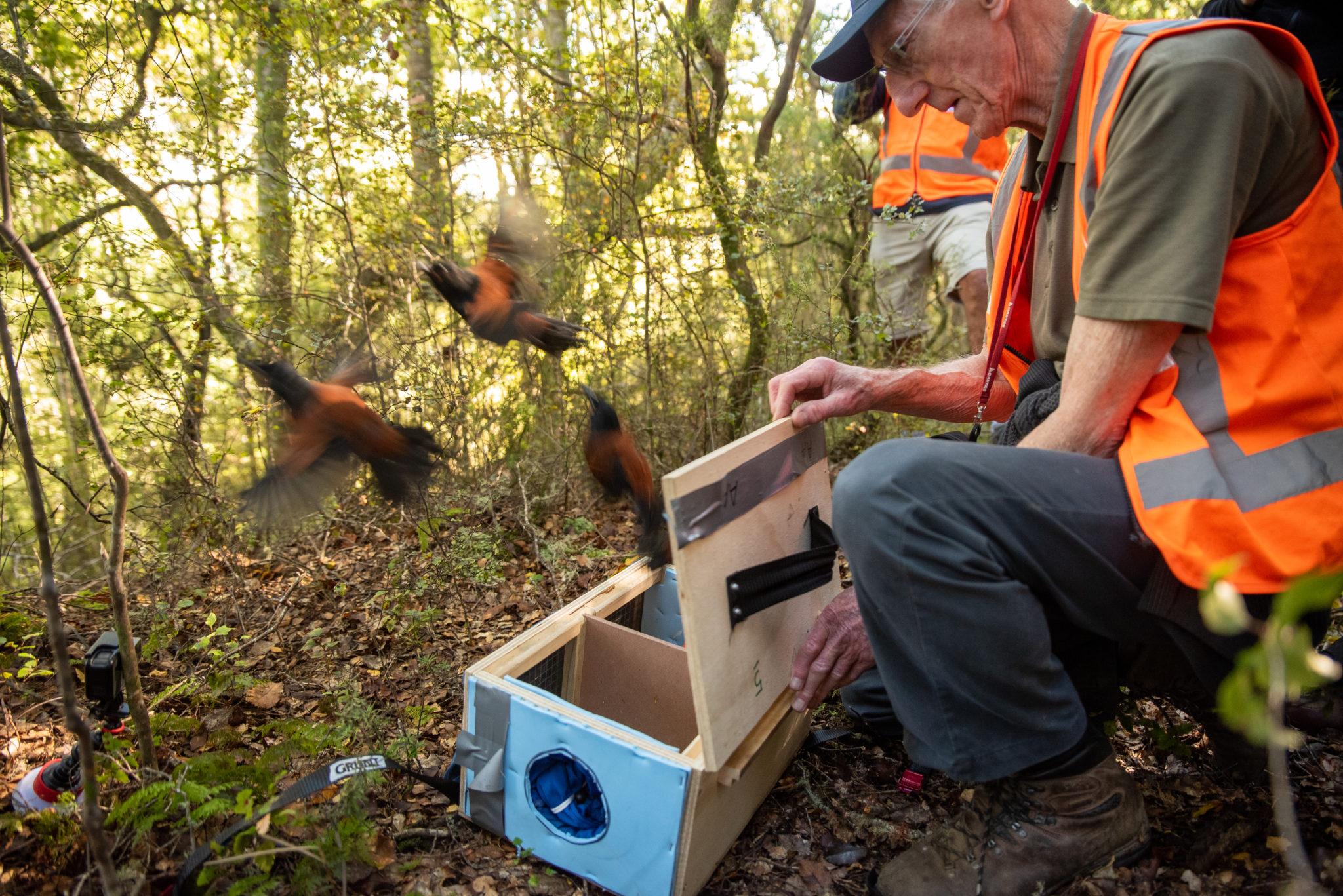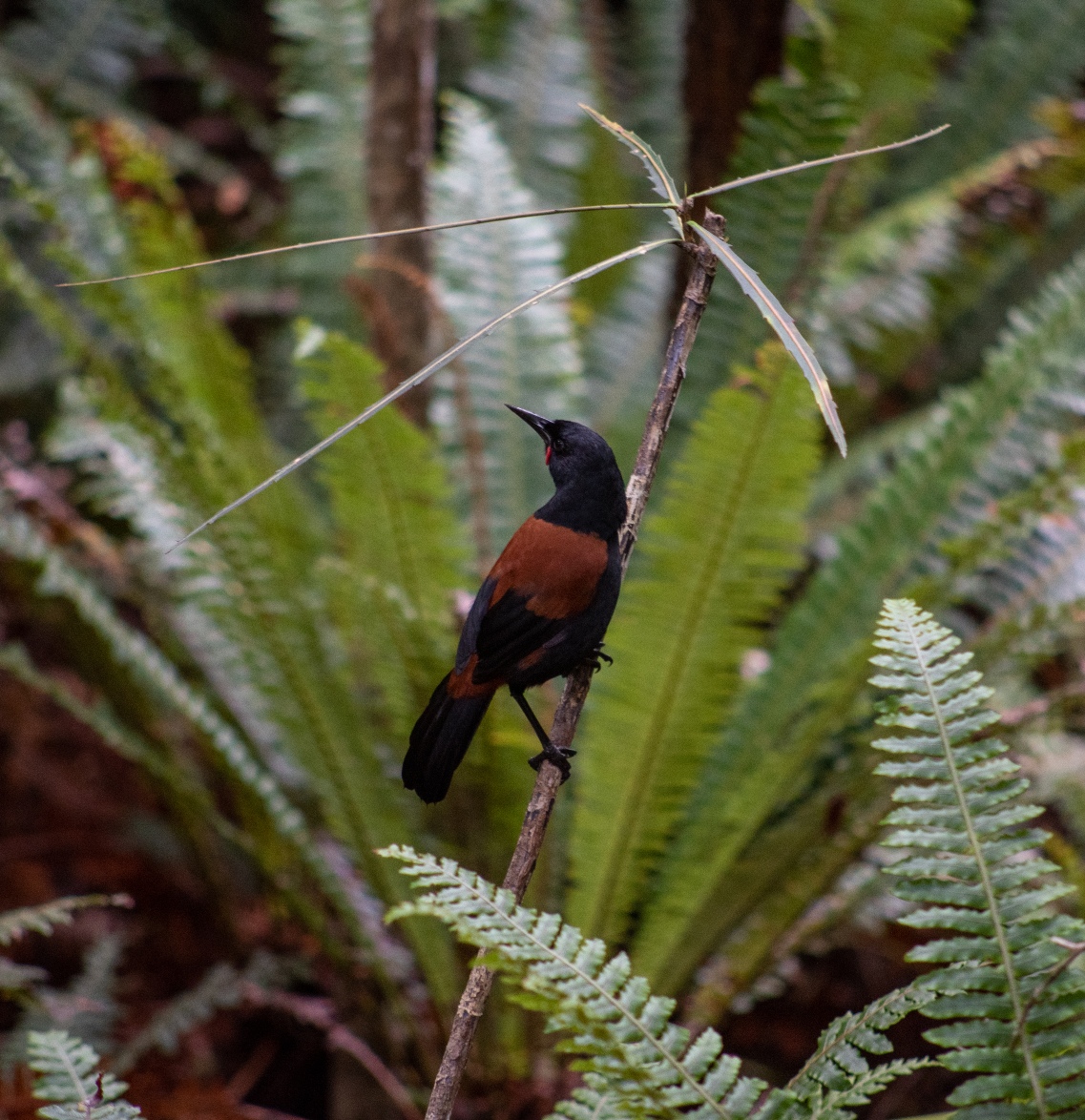Translocation and reintroduction of tīeke
On 19 and 20 April 19, 2021 forty tīeke (South Island saddleback) were transported to the Sanctuary from Motuara Island in the Queen Charlotte Sound, first by boat to Ships Cove, then by helicopter.
All the birds survived the capture operation and translocation (a potentially stressful event for the birds).
This first attempt by the Sanctuary of a species translocation/reintroduction was the culmination of many years of hard work and planning by Sanctuary staff and volunteers.
Despite promising early signs, including initial sightings of bird pairings and of young fledglings, subsequently, it appears that a tīeke population has not established itself in the Sanctuary. It seems highly like that all of the translocated tīeke, and any surviving offspring, have flown beyond the safety of the pest-fence into the neighbouring forest areas and have fallen prey to rats and other introduced predators.
There have been no confirmed sightings of tīeke in the Sanctuary for more than 12 months.
What does this mean for us?
The Sanctuary has been preparing itself for some time to be ready for the translocation and reintroduction of tīeke and many other species that have been lost in this region over the last 200 years or more. The release of tīeke signals a new stage in the development of the Sanctuary for conservation of plant and animal species. It has been recognised, by the Department of Conservation, local iwi and others, that we have the necessary bio-security policies, procedures, infrastructure and technical expertise to ensure reintroduced species have the best possible chance of thriving and increasing in numbers. This opens the way to further reintroductions of species, such as tuatara, kaka, kakariki and kiwi and others.
What is a successful translocation?
Establishment is achieved when a population has become self-sustaining. Depending on the release environment and species involved, this may take several years and may require multiple follow-up translocations to ensure that the population is large enough, and has sufficient genetic diversity, for long-term stability.
There are many factors that contribute to a successful translocation, among them handling the birds with care, selecting healthy individuals, keeping the birds well fed and watered, and minimizing stress and overheating during transport and release.
Translocations of birds to the mainland is more challenging than to offshore islands. The water surrounding islands acts not only as a barrier for invasive predators, but also hinders endangered birds from leaving the safety of the islands. In contrast, due to the open nature of mainland sanctuaries, post-release dispersal away from the release site can be a challenge. The Brook Waimārama Sanctuary is unique because it is connected to the much larger Mount Richmond Forest of approximately 160,000 hectares; the possibility that the reintroduced tīeke will disperse beyond Sanctuary and be at risk of predation is very real. This, alongside the low number of birds translocated, is thought to be the reason that the birds did not establish. Though, once the population is stable inside the fence, it offers a great opportunity for tīeke to overflow into the surrounding forest.
Once the birds are released, maintaining the biosecurity predator-free status of the Sanctuary will be essential. This includes maintaining the integrity of the fence, rapid and effective responses to breaches, ongoing monitoring to detect predator incursions and continuing regular Sanctuary-wide pest surveys. While this is already being done, there will have to be greater vigilance from now on.
The translocation process
The tīeke that were released into the Brook Waimārama Sanctuary came from Motuara Island in the Queen Charlotte Sound. The population on Motuara Island was established in 1994 from descendants of the birds rescued from Big South Cape Island in the 1960’s. They are thriving and healthy. In capturing the birds, preference was given to sub-adults as this may reduce post-release dispersal. They were then transported to the Brook Waimārama Sanctuary by helicopter. The tīeke were welcomed by local iwi representatives at Third House and then released into the Sanctuary. The site was selected for its distance from the fence and proximity to fresh water.
Iwi participated in the handover of the birds on both Motuara Island and at the Brook Waimārama Sanctuary. The ceremony included mihi whakatau, waiata and karakia, prior to the manu (birds) being released. The Sanctuary wants to acknowledge the support of mana whenua iwi in this translocation.
Following the release, birds will be monitored using playback calls, acoustic recorders, and five-minute bird counts. Monitoring efforts will be conducted regularly, and a long-term monitoring plan is established.
What you can do to help
The Sanctuary needs to continue to be predator-free which means high biosecurity vigilance, so we need lots of volunteer help with pest monitoring surveys as well as with donations to help cover costs. Why not join us?
When visiting the Sanctuary it will help us if people report back to the Visitor Center if they sight or hear tīeke during their walk. Birds will have different coloured leg bands and if these can be observed, without disturbing the bird, it will help us build a picture of where individual birds are within the Sanctuary. We would also welcome high-quality pictures and video footage to add to our archives.
People can help by observing the rule of not walking their dogs close to the outside of the fence of the Sanctuary.
Anyone interested in becoming a volunteer, please click here
Financial support
If you wish to make a donation or find out more about becoming a sponsor of the Sanctuary, please click here
Video of the Translocation
You can view some short snippets of video about the release of these birds here and here


